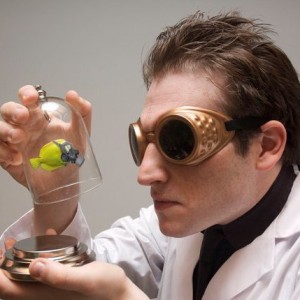
When he isn’t teaching, Jeremy Speed Schwartz, assistant professor of Digital Media & Animation at Alfred State, spends his time traversing wormholes, discovering the surface of Mars (in Ireland), and diving headfirst into aquifers. He calls himself an imaginary scientist, and his work redraws (or altogether erases) the line between fact and fiction, science and art. And believe it or not, it’s his wild imagination that’s allowed him to pair up with some of the greatest minds in science and technology. “In the past, we’ve worked with biologists at MIT, NASA geophysicists, and, most recently, scientists at the Memphis Ground Water Institute,” Speed Schwartz said. It also landed him the rare opportunity to deliver a TEDx talk in Buffalo on October 15 at Canisius College.
TEDxBuffalo, an independently organized TED event, is part of a program created in the spirit of the original TED talks, intended to bring various people together locally to share ideas in a TED-like experience. TEDx talks spark deep discussion and connection just like their TED counterparts, and this year’s theme,“Renaissance Citizens,” included a diverse assortment of speakers — from Mike Connelly, editor of The Buffalo News, to Brian Patterson, Buffalo police chief and motivational speaker, to Cameron Garrity, a graphic designer and puppeteer.
Speed Schwartz’s talk, titled “Imaginary Science: Experiments and Collaborations in Science/Art,” presented some of his work with the League of Imaginary Scientists, an interdisciplinary art group focused on collaboration with scientists in various fields. These imaginary scientists combine video, interactive media, animation, sculpture, and performance in order to concoct research projects that make “playful interdisciplinary leaps.” The League’s experiments have included exploratory climate art, build your own bacteria sculptures, and typewriter musical instruments — injecting a healthy dose of fun into scientific inquiry. “The focus of the talk is the benefits we as artists gain from working with people who have radically different methodologies,” Speed Schwartz said. “This includes how we might use their research as a jumping-off point to explore new ideas, how we might incorporate their strategies into our conceptualization and production, and what these scientists gain from working with us.”


great post!! Thanks